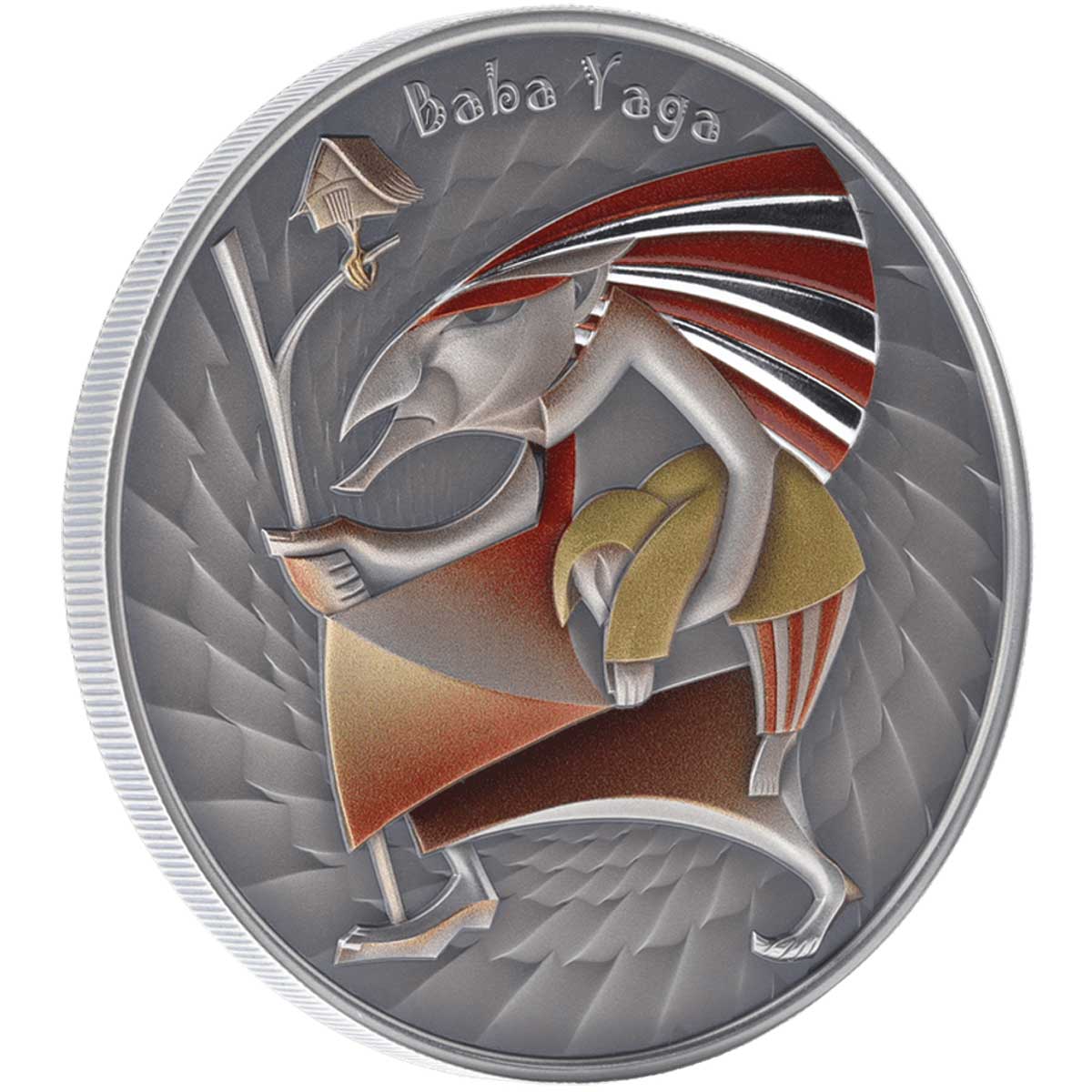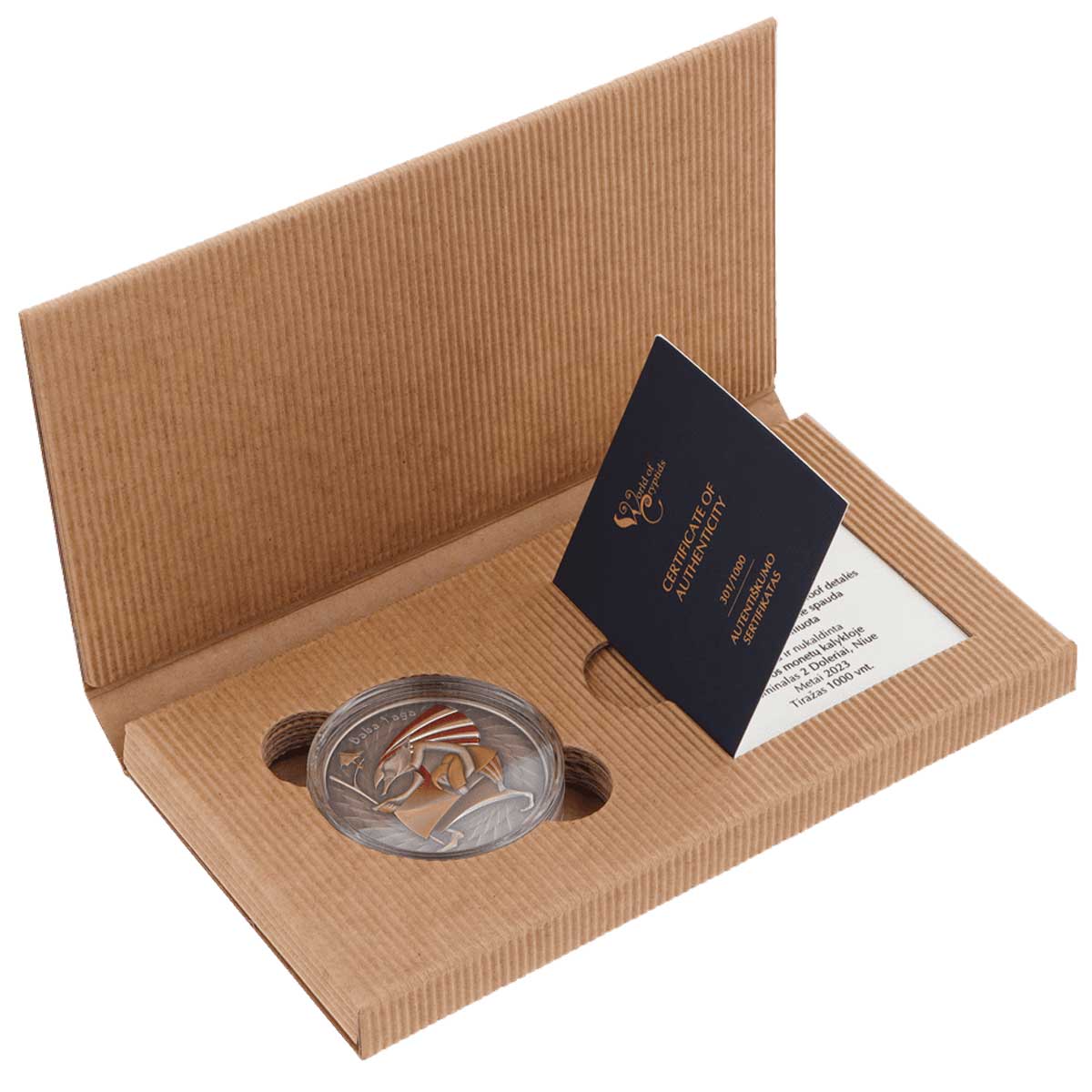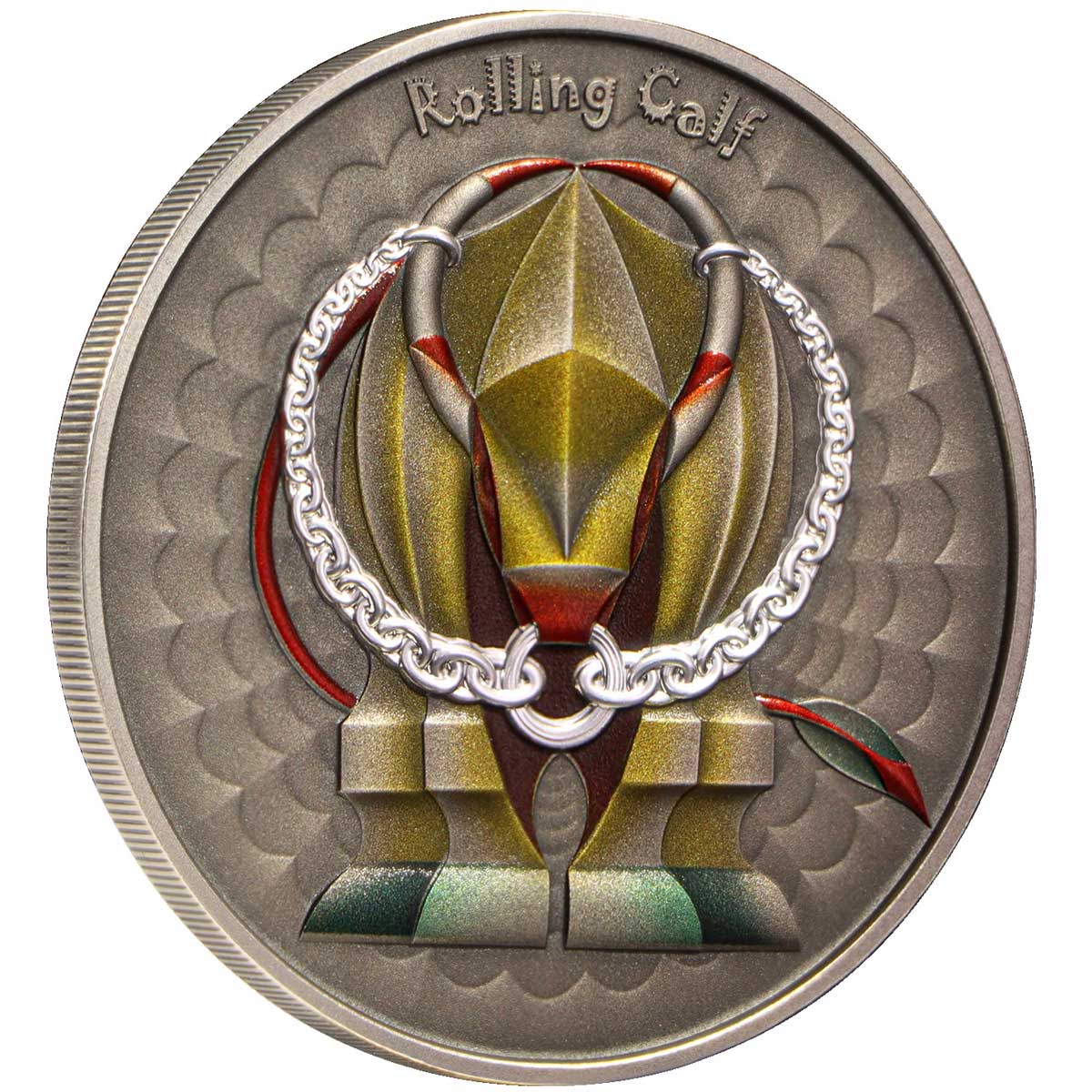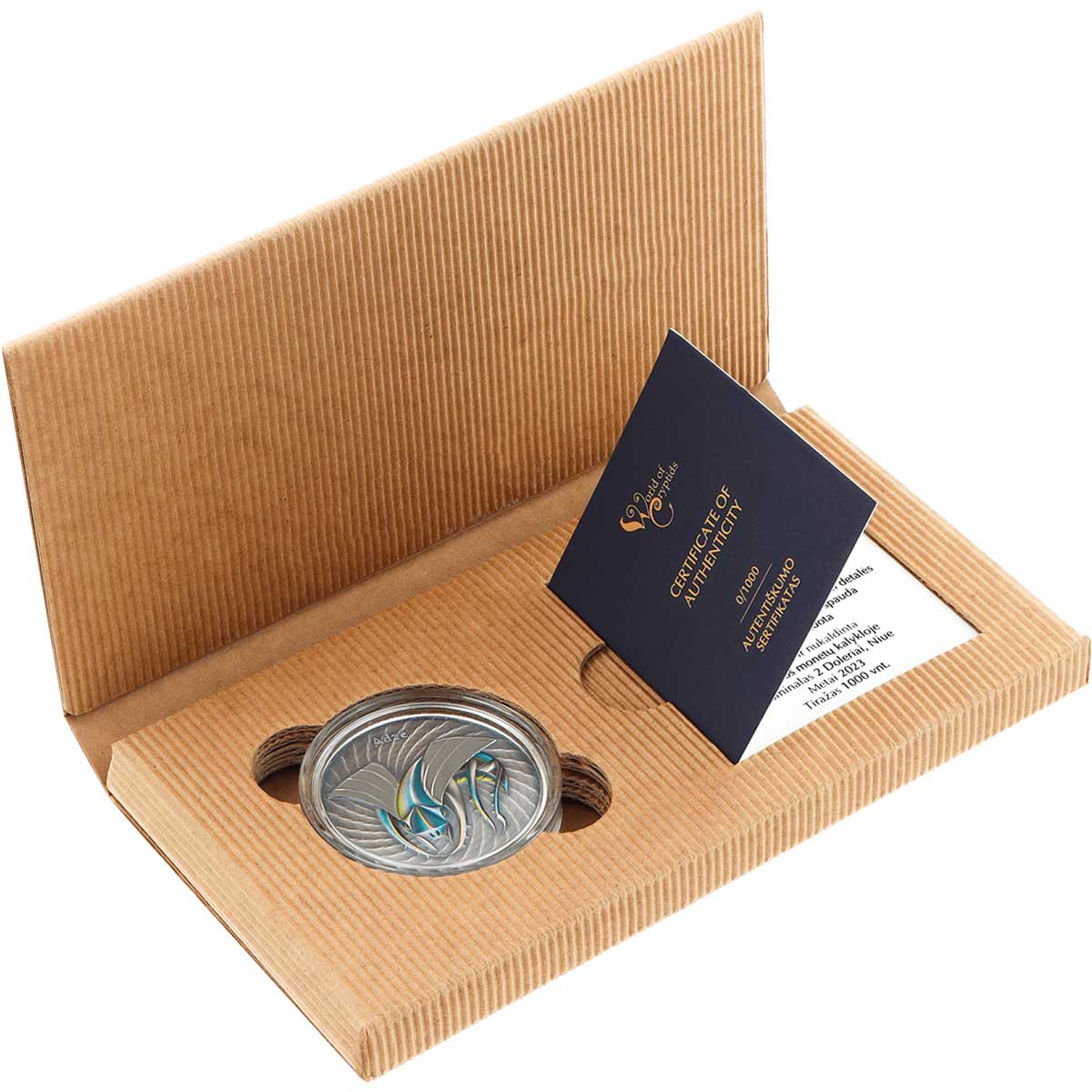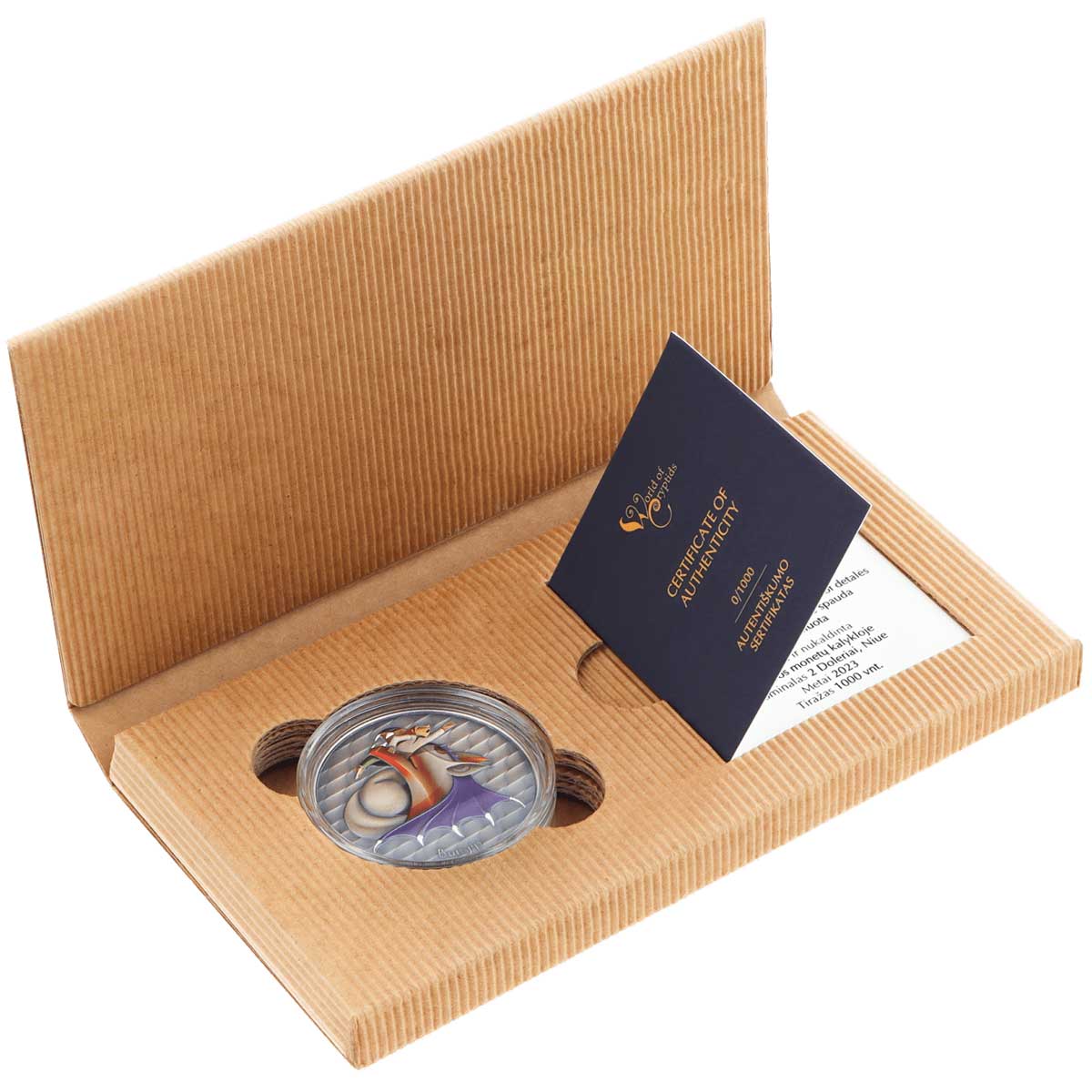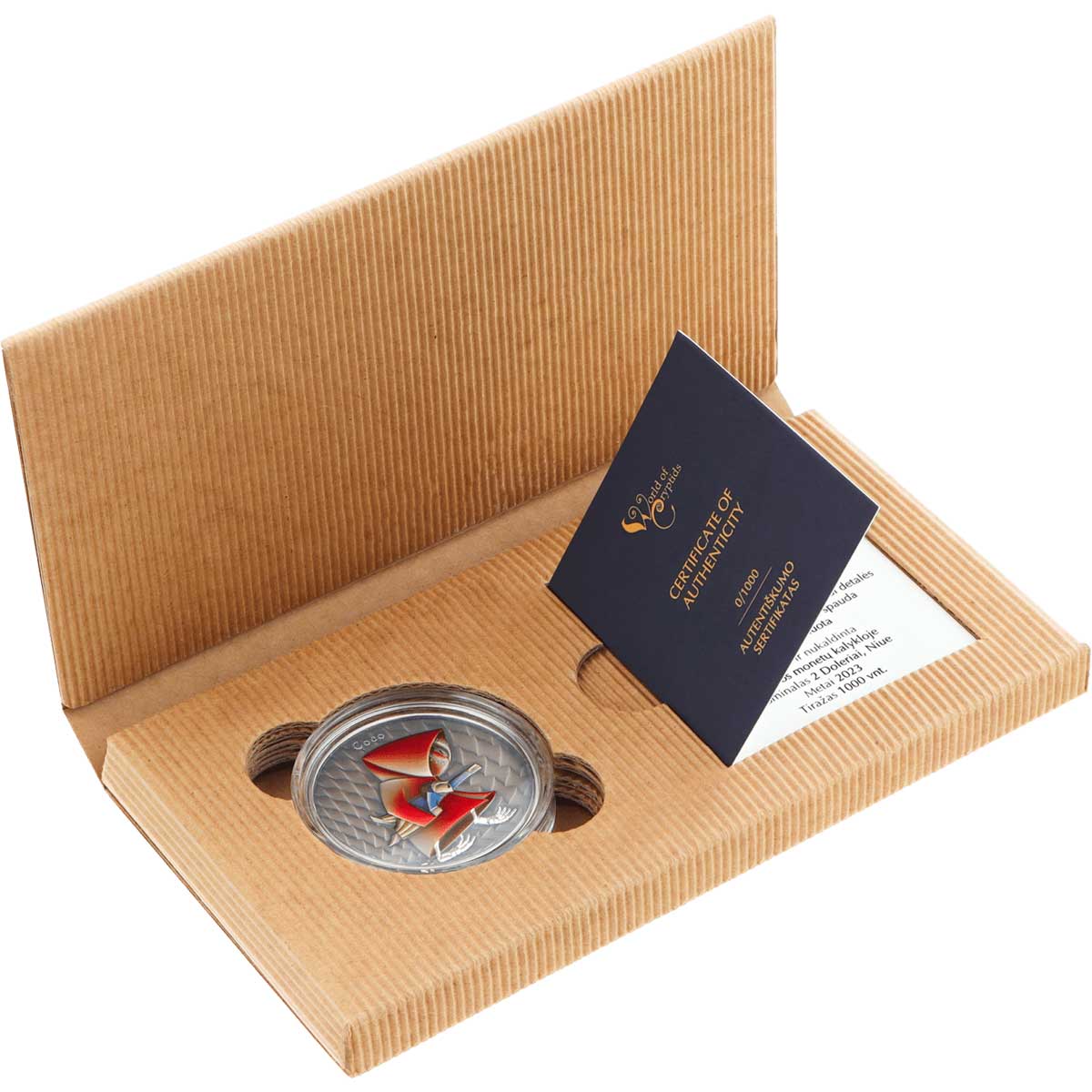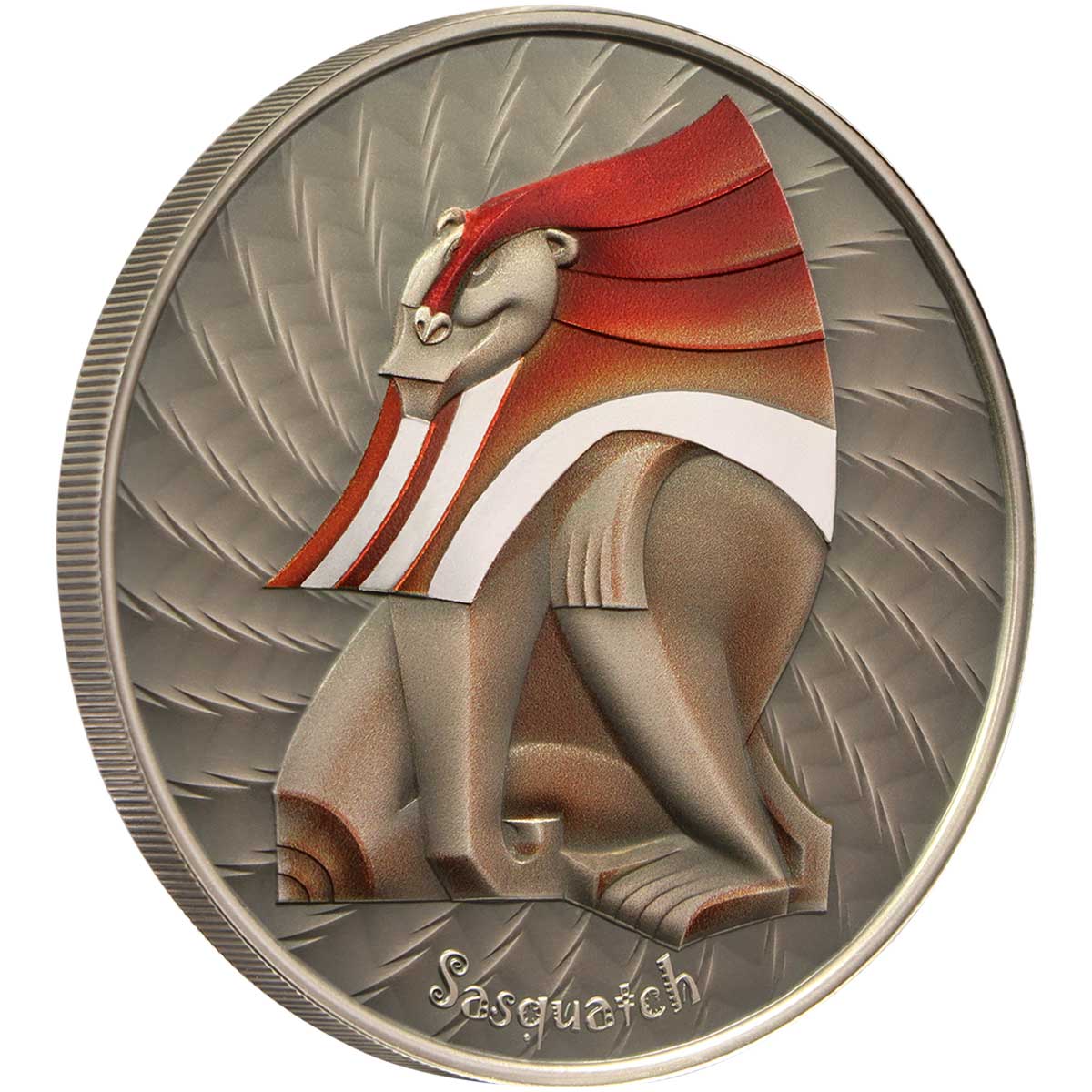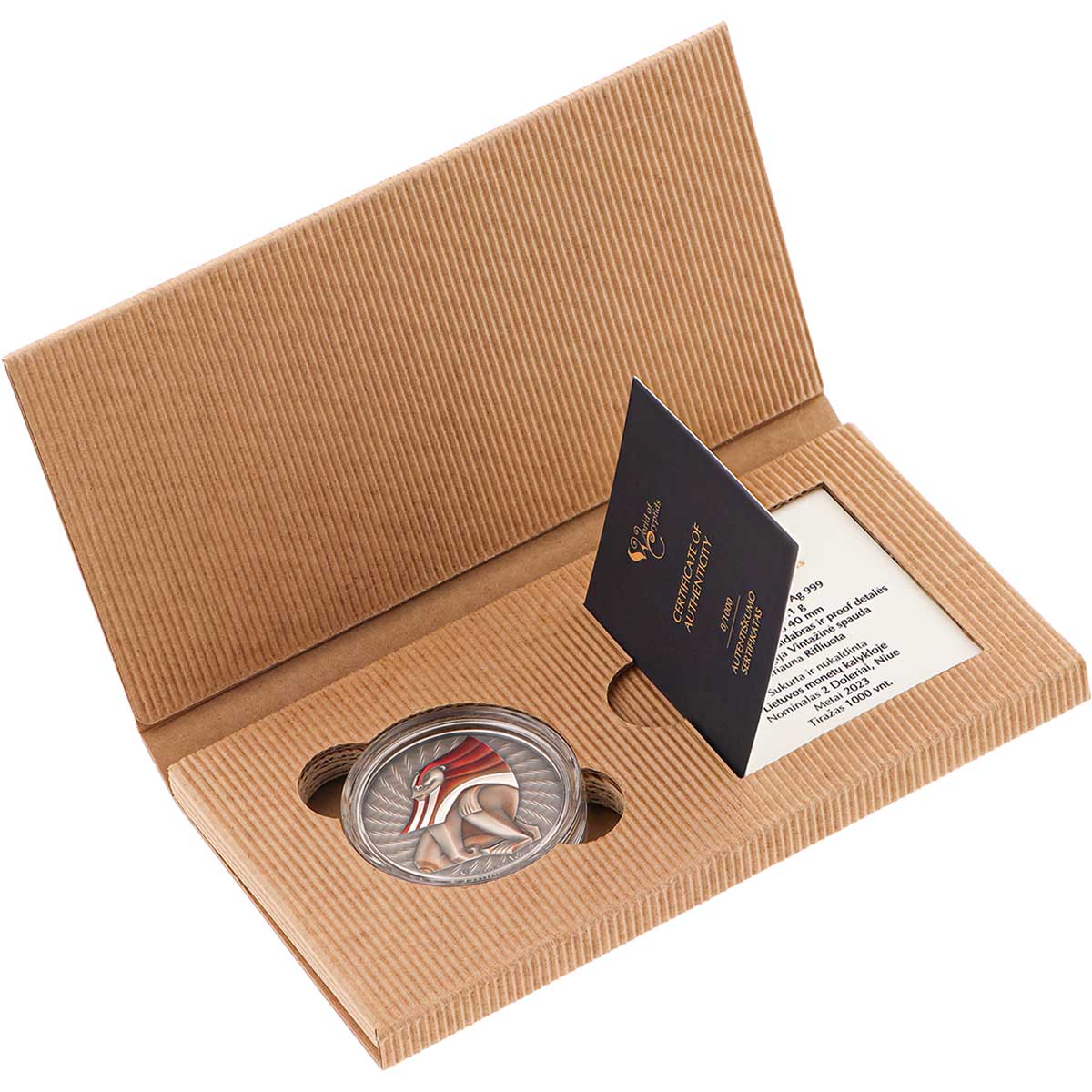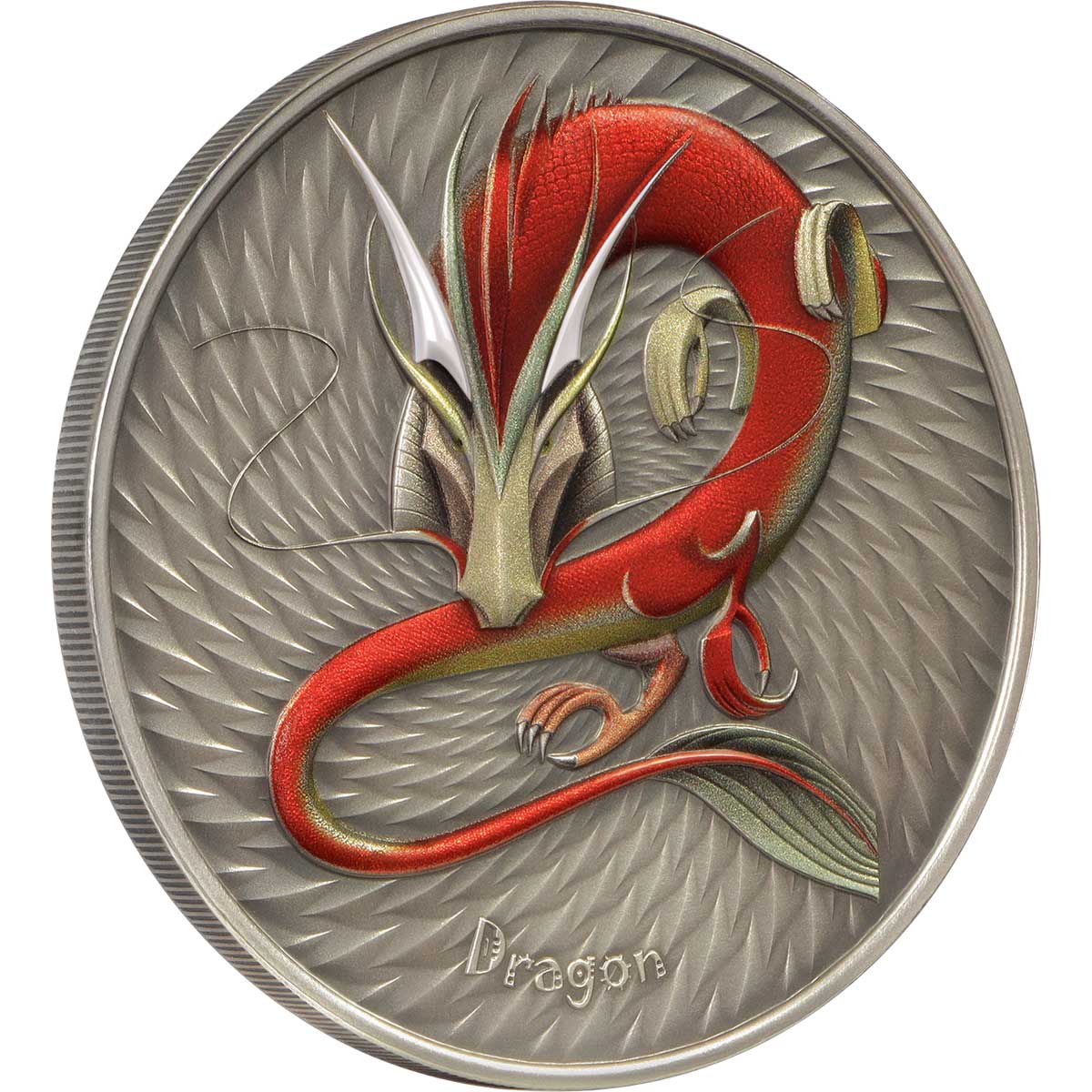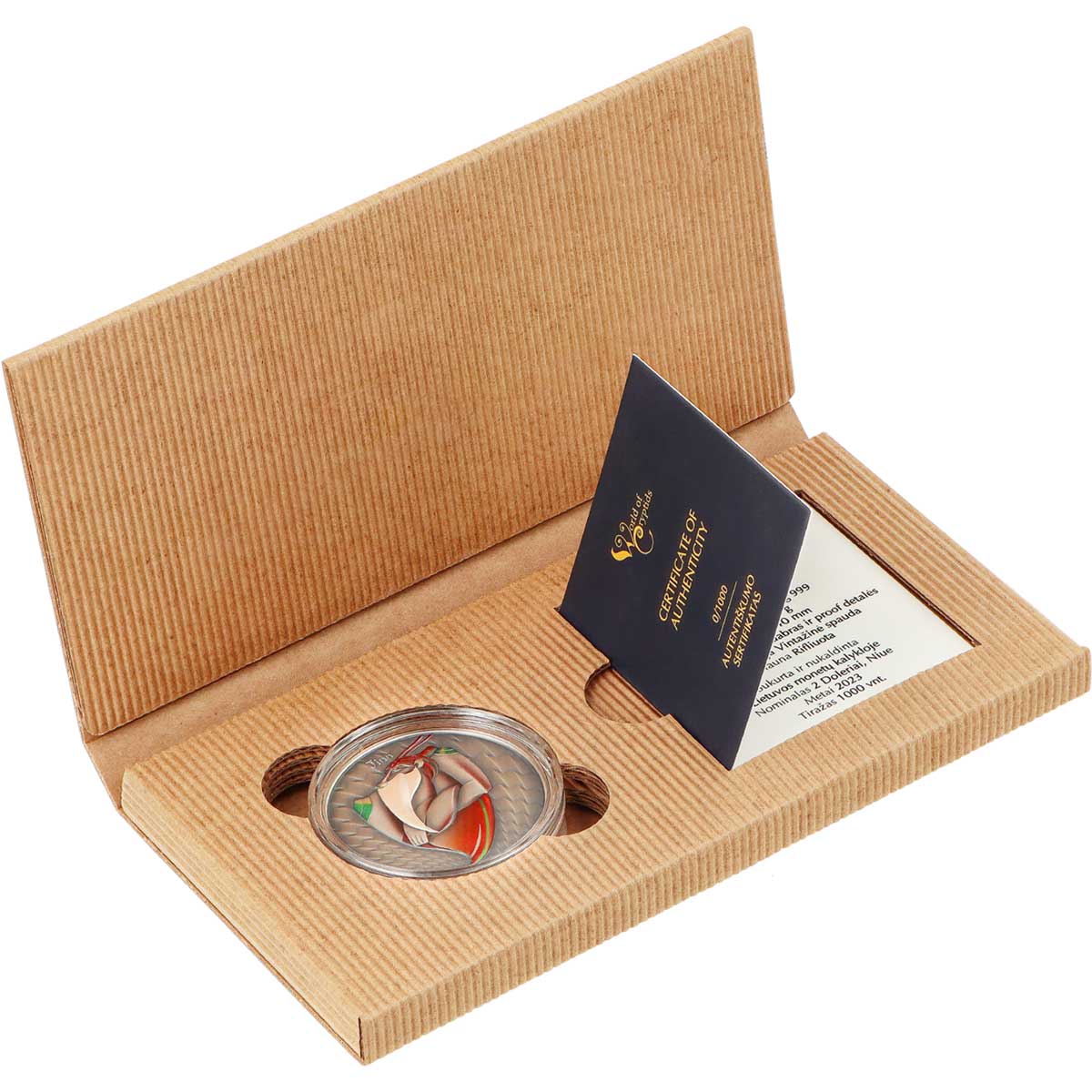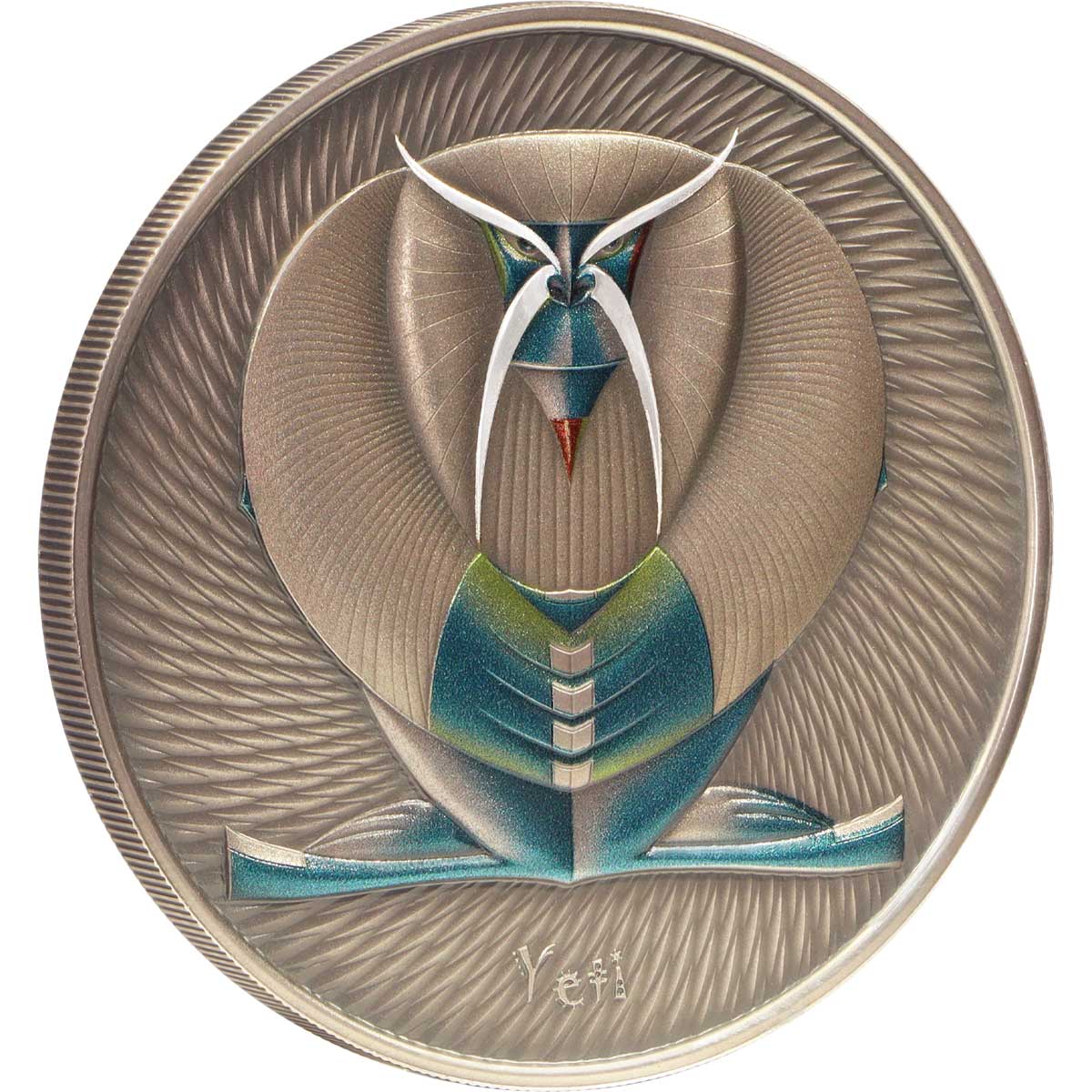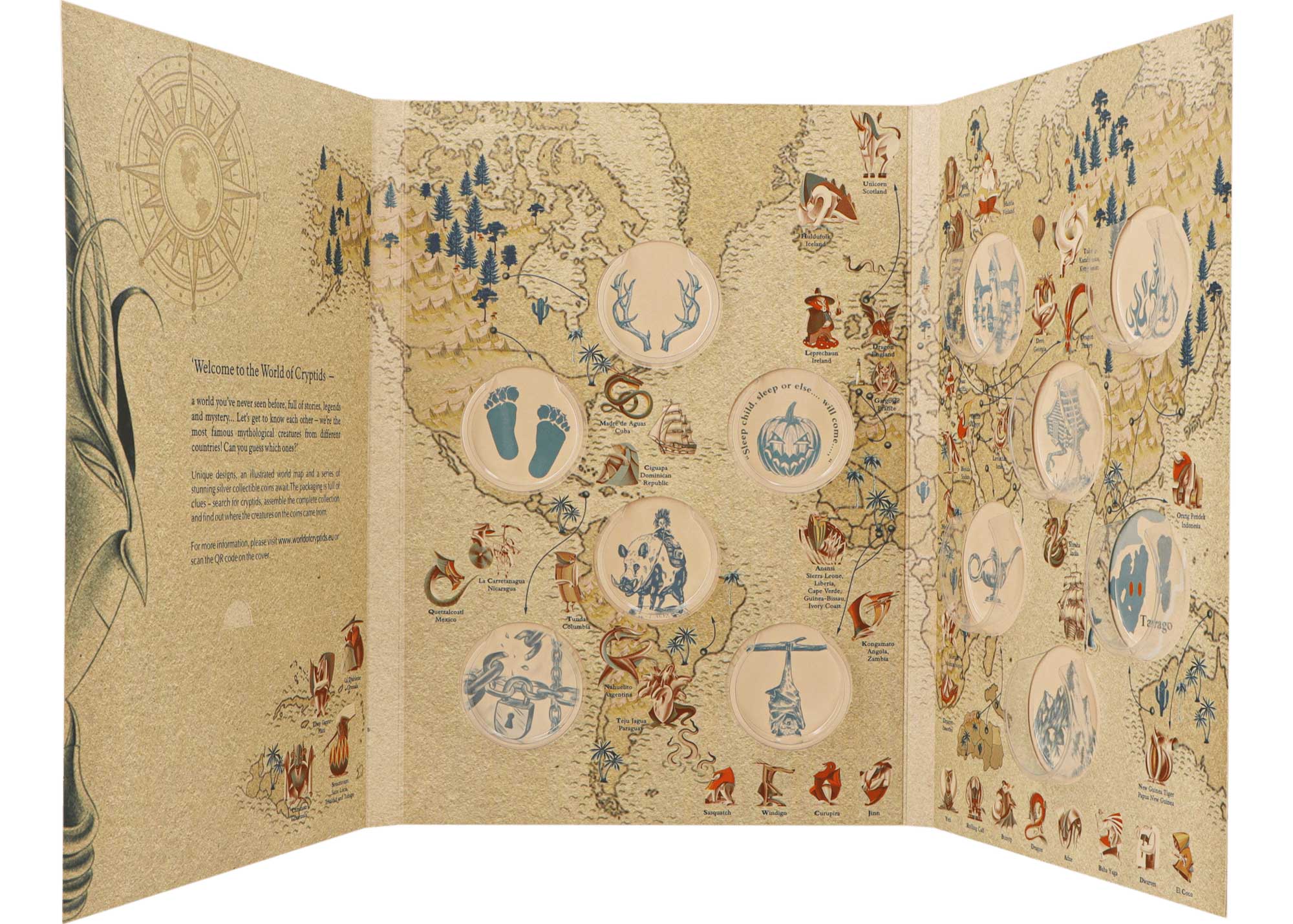WORLD OF CRYPTIDS (2023) by Lithuanian Mint
For centuries, the weird and mysterious has often been attributed to unexplainable creatures of the night. Regular coin collectors will know they’ve been a rich source of inspiration for some quite superb issues, in recent years, but most of them have been at the higher end. The Lithuanian Mint has debuted a new 12-coin series, apparently all to be issued through 2023, which will be more affordable.
Called ‘World of Cryptids’, it will feature some of the world’s most iconic and mysterious creatures. The depictions, by artist Laimutė Varkalaitė, are extremely stylised and very distinctive. It’s part of a project that the artist put together for the 2021 World Illustration Awards, and there were well over a hundred different depictions of various cryptids. We highly recommend a look at the designs, most of which will not feature in this series.
A terrific series in our view, with a unique art style, and a fun subject with global appeal.
The name might be familiar to a lot of people, not from its Slavic origins, but because it was the nickname of the assassin, John Wick, in the movie series of the same name. However, the movies got it wrong, and Baba Yaga isn’t the boogeyman, but actually an unusual supernatural woman. Dwelling deep in a forest, living in a house on chicken legs (no, I’m not making this up…), she flies around in a mortar, and wields a pestle (I promise, I’m really not…). More so than usual, Baba Yaga has a varied mythology.
We’re off to the Caribbean for Rolling Calf next. Native to Jamaica, a duppy is a spirit, sometimes described as a soul of the dead. They come in many varieties, one of the most dangerous being the Rolling-calf. A shapeshifter, often seen as a goat, it is the manifested soul of a very bad person, wreaking havoc wherever they roam.
Dwarves are especially well known in popular culture, especially since the phenomenally successful Lord of the Rings and Hobbit movies over the last couple of decades, and the myriad games that feature them. The depiction is a classic one, with an aged dwarf, holding a hammer, and with the coolest beard/hair combo in coin history!
The Curupira is a mythological creature present in Tupi-Guarani myths, such as those found in Paraguay, the Amazonia of Brazil and the northeast of Argentina. The name comes from the Tupi language kuru’pir, meaning “covered in blisters”. According to the cultural legends, this creature has bright red/orange hair, and resembles a man or a dwarf, but its feet are turned backwards. Curupira lives in the forest and uses its backward feet to create footprints that lead to its starting point, thus making hunters and travellers confused.
Besides that, it can also create illusions and produce a sound that is like a high-pitched whistle, in order to scare and drive its victim to madness. It is common to portray a Curupira riding a collared peccary, much like another Brazilian creature called Caipora. A Curupira will prey on poachers and hunters that take more than they need of the forest, and he also attacks people who hunt animals that were taking care of their offspring. There are many different versions of the legend, and so the creature’s appearance and habits may vary from each region in Brazil. However, Curupira is considered a nationwide folkloric figure. (Wikipedia)
The adze is a vampiric being in Ewe folklore, told by the people of Togo and Ghana. In the wild, the adze takes the form of a firefly, though it will transform into human shape upon capture. When in human form, the adze has the power to possess humans.
People, male or female, possessed by an adze are viewed as witches. The adze’s influence would negatively affect the people who lived around their host. A person is suspected of being possessed in a variety of situations, including: women with brothers (especially if their brother’s children fared better than their own), old people (if the young suddenly started dying and the old stayed alive) and the poor (if they envied the rich). The adze’s effects are generally felt by the possessed victim’s family or those of whom the victim is jealous.
In firefly form, the adze would travel through keyholes, cracks in walls, or under closed doors at night. Once in the home, it would suck blood from people as they slept, making them fall sick and die. Tales of the creature and its effects were probably an attempt to describe the potentially deadly effects of mosquitoes and malaria. There is no defence against an adze. (Wikipedia)
The Bunyip is a mythical creature deeply rooted in Australian folklore. Described as a large, mysterious creature, the Bunyip is often associated with waterways, swamps, and billabongs. While the creature’s appearance varies in different accounts, it is commonly portrayed as having a mix of animal features such as a horse’s head, flippers, tusks, or even feathers. Legends surrounding the Bunyip speak of its eerie howls and its ability to drag unsuspecting victims into the depths of water bodies.
The origins of the Bunyip trace back to Indigenous Australian mythology, where it was believed to be a guardian spirit or a warning of dangerous areas. Over time, the Bunyip’s existence became a subject of fascination and speculation, capturing the imaginations of settlers and explorers in the 19th century.
Despite numerous reported sightings and exaggerated tales, the Bunyip remains an enigma. Today, it has become an iconic figure in Australian culture, representing the mystery and allure of the continent’s diverse and ancient folklore. The Bunyip continues to be a source of inspiration in literature, art, and popular culture, leaving its legend firmly imprinted on the Australian landscape.
The Coco is a legendary creature deeply rooted in Latin American folklore, specifically prevalent in the Caribbean region. Also known as El Coco or Cuco, it is a mythical being often invoked by parents to instil fear and discipline in misbehaving children. The Coco is described as a shape-shifting entity, capable of assuming various forms to evade detection.
According to folklore, the Coco lurks in the shadows, waiting for disobedient children who refuse to sleep or behave. Its appearance varies, but it is often portrayed as a grotesque, hairy monster with glowing eyes and elongated claws. The Coco is said to emit an eerie sound, resembling a blend of whispers and groans, further intensifying its terrifying aura.
The legend of the Coco serves as a cautionary tale, emphasizing the importance of obedience and respect for authority. While the Coco may be a source of fright for youngsters, its existence is primarily used as a means to encourage good behaviour and adherence to parental guidance in many Latin American cultures.
Sasquatch, often referred to as Bigfoot, is a legendary and elusive creature said to inhabit remote forests and wilderness areas, primarily in North America. Described as a large, ape-like being, Sasquatch has become a subject of fascination and debate among cryptozoologists and enthusiasts of the unexplained. Sightings of Sasquatch have been reported for decades, with numerous anecdotal accounts, footprint casts, and even blurry photographs claimed as evidence.
Despite the enduring popularity of Sasquatch in popular culture and its portrayal in various books, documentaries, and movies, scientific consensus remains sceptical about its existence. Many proposed sightings can be attributed to misidentifications, hoaxes, or natural phenomena. Efforts to locate definitive proof of Sasquatch’s existence, such as DNA analysis of alleged hair samples or comprehensive field studies, have yielded inconclusive results.
A dragon is a large magical legendary creature that appears in the folklore of multiple cultures worldwide. Beliefs about dragons vary considerably through regions, but dragons in western cultures since the High Middle Ages have often been depicted as winged, horned, and capable of breathing fire. Dragons in eastern cultures are usually depicted as wingless, four-legged, serpentine creatures with above-average intelligence. Commonalities between dragons’ traits are often a hybridization of feline, reptilian, mammal, and avian features. Scholars believe vast extinct or migrating crocodiles bear the closest resemblance, especially when encountered in forested or swampy areas, and are most likely the template of modern Oriental dragon imagery.
Draconic creatures appear in virtually all cultures around the globe, and the earliest attested reports of draconic creatures resemble giant snakes. Draconic creatures are first described in the mythologies of the ancient Near East and appear in ancient Mesopotamian art and literature. Stories about storm-gods slaying giant serpents occur throughout nearly all Near Eastern and Indo-European mythologies. Famous prototypical draconic creatures include the mušḫuššu of ancient Mesopotamia; Apep in Egyptian mythology; Vṛtra in the Rigveda; the Leviathan in the Hebrew Bible; Grand’Goule in the Poitou region in France; Python, Ladon, Wyvern, and Kulshedra in Albanian Mythology and the Lernaean Hydra in Greek mythology; Unhcegila in Lakota mythology; Jörmungandr, Níðhöggr, and Fafnir in Norse mythology; the dragon from Beowulf; and aži and az in ancient Persian mythology, closely related to another mythological figure, called Aži Dahaka or Zahhak.
Jinn, often spelled as “djinn” or “genies,” are supernatural creatures deeply rooted in Middle Eastern folklore and Islamic mythology. They exist in a parallel world to humans and are created from smokeless fire, making them ethereal and elusive. The Quran, the holy book of Islam, mentions jinn as sentient beings possessing free will, capable of good and evil deeds. This duality has led to a rich tapestry of stories and beliefs surrounding them.
In popular culture, jinn are often depicted as magical entities capable of granting wishes to those who summon them, a concept popularized by the collection of Middle Eastern folktales known as “One Thousand and One Nights.” These tales have cemented the image of the genie in a lamp or bottle, ready to fulfil the wishes of those who release them. While this portrayal is captivating, it simplifies the complexity of jinn as beings with their own desires, motivations, and personalities.
The Wendigo, deeply rooted in Algonquian folklore, is a mythical creature that embodies the embodiment of greed, hunger, and the unforgiving wilderness. This supernatural being is often depicted as a malevolent, cannibalistic spirit or creature with an insatiable appetite for human flesh. According to legends, individuals who resort to cannibalism in the wilderness may become cursed, transforming into Wendigos themselves. The Wendigo is often described as a gaunt, emaciated figure with glowing eyes, possessing an otherworldly strength and speed.
Throughout history, the Wendigo has served as a cautionary tale, warning against the moral dangers of succumbing to greed and the desperation that arises in extreme conditions. The legend of the Wendigo persists in various forms across indigenous cultures, becoming a symbol of the consequences of violating the natural order and succumbing to the darker impulses within human nature.
The Yeti, also known as the “Abominable Snowman,” is a mythical ape-like creature steeped in Himalayan folklore and cryptozoology. Described as a large, hairy hominid, the Yeti is said to inhabit the remote, snow-covered mountain regions of Nepal and Tibet. Despite numerous anecdotal accounts and occasional footprints, there is no conclusive scientific evidence supporting the existence of the Yeti.
Local legends often depict the Yeti as a shy and elusive creature, avoiding human contact. Its ambiguous status has fuelled speculation and captured the imagination of adventurers and researchers alike. Various expeditions have sought to uncover the truth behind the myth, with some attributing reported sightings to misidentifications of local wildlife or natural phenomena.
The Yeti remains an enduring mystery, blending cultural mythology with the intrigue of undiscovered species. Its enigmatic status continues to inspire both scepticism and fascination, making it a captivating part of the world’s folklore and a subject of ongoing exploration and speculation.
The obverse has a background pattern, but is otherwise just the emblem of the issuing state, Niue. The pattern is similar to those employed on the various reverse designs, but in this case, remains consistent throughout the series.
While the first coin comes with a Certificate of Authenticity and what looks to be a simple box, it also comes with a gatefold binder that has spots in it to hold all twelve coins in the series, amidst some neat cartography. Each one has its own themed space to go in. A nice addition.
SPECIFICATION
| WORLD OF CRYPTIDS SERIES |
|
| DENOMINATION | $2 NZD (Niue) |
| COMPOSITION | 31.1 grams of 0.999 silver |
| DIMENSIONS | 40.0 mm |
| FINISH | Antique with colour |
| MINTAGE | 1,000 |



